Exploring Tokyo as a leader in urban sustainability
)
Cities are increasingly expected to bear the onus of global sustainable development objectives. After all, 75% of global emissions and about 50% of global waste derive from cities. 56% of the world’s population live in cities, and by 2050 almost 70% of the world will live in cities.
In this context, cities need to become stronger agents of sustainability. There is increasing discussion of city diplomacy as an avenue to develop climate solutions, which signifies cities’ important role in ‘bottom-up’ climate change action, especially at the global level.
Tokyo is a global finance, culture and tourism hub, with a population of over 14 million people and a Gross Metropolitan Product (GMP) of just over 1.0 trillion USD. Cities of this scale must bear a substantial burden in accomplishing the UN Sustainable Development Goals. Luckily, Tokyo has an ambitious sustainability mandate, which presents numerous opportunities for the city.
Tokyo’s sustainability accomplishments & mandateTokyo has a very rich history of sustainability and resilience - with a clear mandate to achieve net zero emissions by 2050 (under the Zero Emission Tokyo Strategy).
Consequently, the Tokyo Metropolitan Government (TMG) has many impressive sustainability credentials. 80’000 Ha of Tokyo are green, natural parks, and the TMG’s per-capita energy, water and waste flows are noticeably lower than the average of peer cities such as Shanghai, New York City, London and Paris. The TMG also initiated the world’s first carbon cap and trade scheme at the city level, encompassing both the commercial and industrial sectors. This is imperative in reducing urban emissions.
In addition, Tokyo has many admirable sustainability objectives. These include various 2030 goals, including:
-
A 50% emissions reduction goal compared to 2000 levels
-
A 50% reduction in energy consumption compared to 2000 levels
-
A 50% renewable energy target
-
100% of TMG buildings are powered by renewable energy
These targets exist alongside the proposed ‘Tokyo eSG’ city - a brand new high-tech, sustainable city based around Environmental, Social and Governance (ESG) principles. This new city intends to attract global venture capital and start-up stakeholders who are financing circular economy technologies. Likewise, Tokyo eSG city’s energy needs will be met through hydrogen, wind farms and floating solar panels.
The opportunity for circular economy and sustainable infrastructure in TokyoTokyo is a densely built city with many residential and office buildings. Buildings are a major source of emissions, with CO2 emissions accounting for 70% of the total CO2 emissions in Tokyo.
TMG has been working to reduce CO2 emissions through measures for large-scale office buildings. These include promoting energy efficiency, along with the use of renewable energy, and comprehensive energy management, alongside subsidies for energy conservation retrofits of existing buildings.
Additionally, the aforementioned cap-and-trade system for large establishments will be strengthened. The TMG are also promoting the use of more sustainable materials, such as wood, with lower embodied carbon.
The Tokyo Olympics particularly demonstrated Tokyo's potential as a circular economy and sustainable materials leader.
Out of the 43 competition venues, only eight were newly constructed. Materials such as the wood for the Olympic Village Plaza were donated by the local government. After the games, the wood was returned and repurposed in other infrastructure projects. Additionally, athletes' beds, constructed from cardboard, were set to be recycled post-Games, including the mattresses, which were repurposed into new plastic items.
Furthermore, according to organisers, around 65,000 electronic devices including computers, tablets, and consumer appliances, along with 19,000 office furniture pieces such as desks and chairs, were used during the Olympics and subsequently repurposed.

